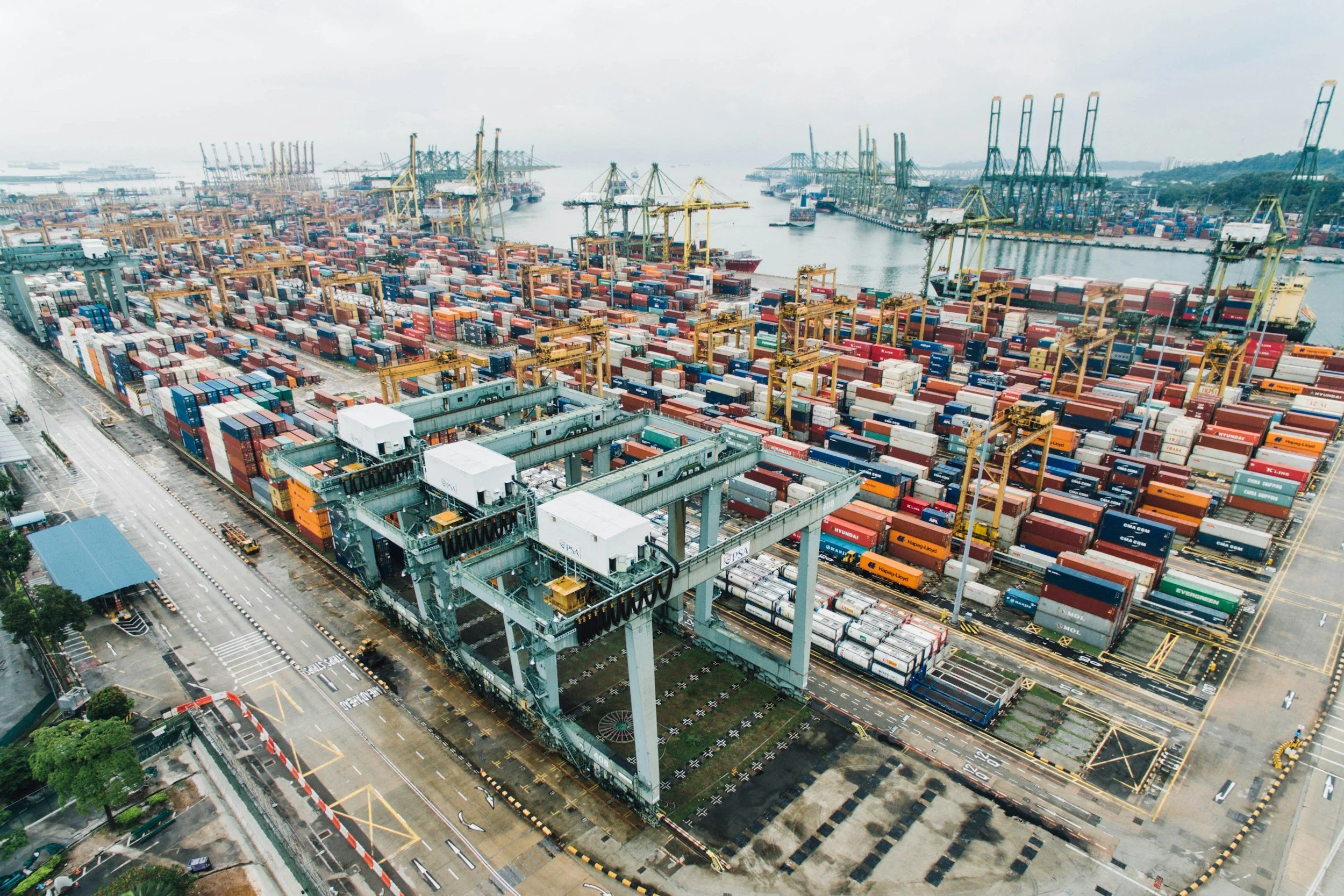Industry Insights: Brent Smith and Liudmyla Slobodianiuk from Ecojet
In this series of blogposts, we sit down with SASHA members to explore what drives their work and where policy support is most urgently needed.
In this edition, we speak to Brent Smith and Liudmyla Slobodianiuk of Ecojet, a new airline aiming to fly zero carbon emission green hydrogen-powered planes.
Ecojet: pioneering zero-carbon flying with hydrogen
When Ecojet’s founders set out to launch the UK’s first zero-emission airline, their sights were always set beyond just providing a green way to fly, but on catalysing a sector-wide disruption.
“We are attempting to pioneer the future of sustainable aviation,” explains Brent Smith, the company’s co-founder and CEO. “We want to decarbonise regional air travel, that is our goal.”
While Ecojet was initially technology-agnostic, the team ultimately landed on hydrogen-electric propulsion using fuel cells. “The hydrogen goes through the fuel cell and is converted to electricity, which powers an electric motor,” Brent explains. “So it’s an electric aircraft — but instead of having lithium-ion in your battery, you have green hydrogen.”
When hydrogen is produced by splitting water using electricity from renewable sources—a process known as electrolysis—the result is ‘green hydrogen’. “It is green hydrogen that allows this type of air travel to be a true zero-emission transport solution,” says Brent.
Hydrogen was chosen not only for its low emissions but also its practicality. “Hydrogen as a fuel is energy dense — so it's light, but provides a lot of power,” explains Brent. “The trade-off is space, but the solutions that, for example, ZeroAvia are developing are innovative and operationally practical.”
Late last year Ecojet deepened its already long-standing relationship with ZeroAvia, also a SASHA Coalition member, by agreeing to purchase 22 of the latter’s ZA2000 hydrogen-electric engines.
Regulation barriers to zero-emission flying
Despite the tech’s promise, building a zero-emission airline today is a challenge — not least because the policy and regulatory landscape hasn’t caught up.
“The aviation industry has in theory committed to dramatically decreasing its environmental impact to reach net zero in 2050,” says Liudmyla Slobodianiuk, Ecojet’s Chief Commercial Officer, “but we still lack the needed procedures and standards.”
Talking specifically about barriers to market entry Liudmyla continues, “I think a common misconception is that obtaining an airline operator’s certificate (AOC) from the UK Civil Aviation Authority is uniquely difficult for clean aviation ventures. In reality, Ecojet is currently navigating the same certification process as any conventional airline. The primary barrier is not regulatory, but financial – securing the investment needed to reach operational readiness. However, what does cast a shadow over the sector is the uncertainty surrounding future certification pathways for hydrogen-powered aircraft. This lack of clarity is likely to influence investor confidence, as the long-term regulatory environment for hydrogen aviation remains undefined.”
Still, this policy gap presents an opportunity for early movers like Ecojet to help shape emerging standards. “That’s why Ecojet is acting now, not later. We need industry to be assisting in the development of regulatory framework, to influence standards and policy direction, and push suppliers to prepare for the transition ahead”, explains Brent.
Policy to make polluters pay
Government regulation is also a factor. 2025 has already marked a key milestone in aviation’s journey towards a sustainable future with the UK SAF mandate’s entry into effect. This year 2% of UK jet fuel demand must be met with sustainable aviation fuel (SAF), a mandate set to increase to 10% in 2030, and 22% in 2040.
As Liudmyla points out though, the industry is enduring a, perhaps natural, teething period. “One of the most common questions we hear in the consulting space,” she says, “is ‘how do we procure SAF when supply remains so limited?’”
This question is valid – green fuel production rates are not yet at the necessary scale. While the industry itself must do more to help producers, by demonstrating fuel demand, government policy must play a greater role too.
Liudmyla notes that the SAF mandate buy-out mechanism is one area that could be changed for potential improvement. “If we cannot prevent the harm to the environment, then we should compensate,” she says. Under the current system, if fuel suppliers do not meet their SAF quotas they can pay a buy-out price. “That approach is fair, but ideally, those funds need to be transparently reinvested into sustainable fuel development and infrastructure.”
It's well established that polluting industries should not only be accountable for their climate impacts but responsible too for cleaning up their own business. For hard-to-electrify sectors like aviation, this necessarily involves financing the innovation, development and deployment of new solutions. That the government recently concluded that the revenue support mechanism for alternative fuel producers will be funded by a levy on fuel suppliers shows that this idea is picking up traction.
Sifting climate action from the hydrogen hype
One of the struggles when working with green hydrogen is grappling with preconceptions. “I was outside our office two weeks ago and a guy from upstairs came down, he’s like, ‘I’d never get on that airplane. Has anybody heard of the Hindenburg?’” Brent laughs. “Technology has come along quite a bit in 100 years, mate.” He goes on to explain that hydrogen’s flashpoint – the temperature at which a liquid produces enough flammable vapour to ignite a flame – is actually higher than that of conventional jet fuel. The fuel cells are also fitted with safety measures: if the pressure reaches a certain level, they release the hydrogen into the atmosphere leaving you with more than enough battery power to safely land the aircraft.
Beyond safety, green hydrogen has been subject to competing narratives about its role in the energy transition. Early proponents wrongly pitched green hydrogen as a one-size-fits-all silver bullet, dramatically over-promising returns. In reality, the most efficient and climate action-aligned use of green hydrogen is a limited one: it should be used to abate emissions in hard-to-electrify sectors that have no other viable options, certainly not sectors that can be easily electrified like road transport and domestic heating.
The green hydrogen overhype has since been met by a tendency to understate its role and sensationalise its shortcomings. “Take the news earlier this year about Airbus’s ZEROe (hydrogen aircraft) project,” Brent says. “The mainstream media, and outlets opposing zero-emission solutions, framed it as Airbus pulling out of hydrogen. But that’s not the case. It's been pushed back five to 10 years. It's a delay, not unlike every innovative technology that has ever existed.”
In this context, a green hydrogen narrative that pragmatically marries ambitious vision with the best available scientific evidence is key. “Having a specific hydrogen coalition like SASHA banging the drum for sensible and effective policy, that’s more important than ever,” Brent says.
Industry inaction on green hydrogen aviation
For Brent, much of the responsibility for aviation’s sluggish energy transition falls to the industry itself. “It is a damning reflection on us as an industry that Airbus has had to push back its hydrogen program,” Brent says. “It's not technology that's holding us up. It's not infrastructure. It's us as an industry failing to show ambition and place orders.”
Airlines ordering new aircraft is a major factor in the equation, signaling commitment to the energy transition and demand for innovative hydrogen models – or lack thereof. Airlines order aircraft 10 years in advance and use them for a further 20 years. Brent explains that airlines will have filled their order books up to 2035 with conventionally powered planes that will be in operation through 2050. “Airbus will produce whatever the market wants,” Brent says, “and the market hasn't asked for hydrogen-powered airplanes. That's the problem.”
Indeed, new research from Carbon Tracker ahead of this week’s Paris Air Show, showed that orders for conventional aircraft vastly overshadowed those for new electric or hydrogen-propulsion aircraft.
It is pioneering companies like Ecojet, however, that might force the aviation majors into action. “When Ecojet gets to market, with ZeroAvia’s engines, the fact that we’re flying planes without any CO2 emissions, without any NOx and without contrails, will put a huge amount of pressure on major airlines dragging their feet on the pretext that what we’re doing wasn’t possible,” Brent says. “They’ll keep flying on kerosene as long as they possibly can, but when we show that hydrogen’s possible the choice will be taken from them and offered to the consumer, and at that point, I believe our competitors will have to change.”
Brent lays plain how transformative the disruption Ecojet is poised to create can be. “I could very easily imagine Airbus rolling its hydrogen aircraft timeline forward again,” he says. “Because the technical knowledge and expertise is not the hurdle. It is the desire to make change happen, rather than simply greenwash, that we’re missing.”
Changing industry mindsets on aviation’s climate impact
The challenge Ecojet poses to the aviation industry writ large is also an invitation to join its forward-thinking and climate conscious approach. “We’re trying to build a new system, but in order to do that we need a different mindset,” Liudmyla says. “We try to be role models, to influence others across the industry.”
Despite inaction on the part of industry majors, there are hints that the mindset is changing. Brent notes Anthony Viaux, who announced his resignation as an Air France pilot on account of eco-anxiety early this year. The group Safe Landing – “a community of aviation workers and enthusiasts who care about the future of our industry and our planet” – presents another prime example.
Indeed, alongside ‘Sustainability’ and ‘Innovation’, it is ‘People’ and ‘Airmanship’ that round off Ecojet’s four core values. This doesn’t only mean keeping a caring eye on employee wellbeing, but also maintaining pride in the industry – Liudmyla’s career in airlines operations spans decades, and Brent himself is a former pilot. “We want to be an employer of choice,” he says, “but also attract people who are inspired by what we’re doing and buy into our vision.”
As mindsets within the aviation industry continue to change, Ecojet will be a growing home to welcome them. Liudmyla is emphatic about just how important this prong of the company’s approach is. “Honestly, I don't see any other approach.”
Read Ecojet’s member bio to learn more. The views expressed here do not necessarily reflect those of the wider SASHA Coalition.












